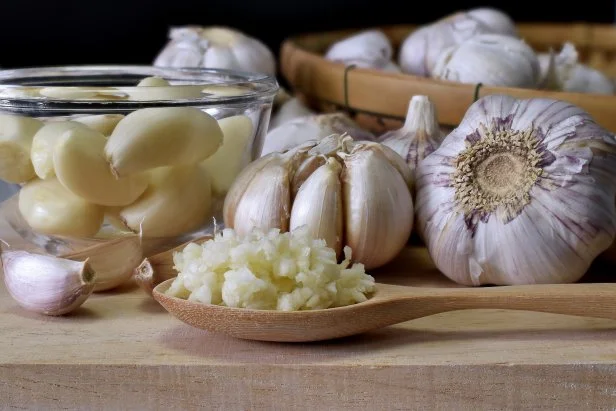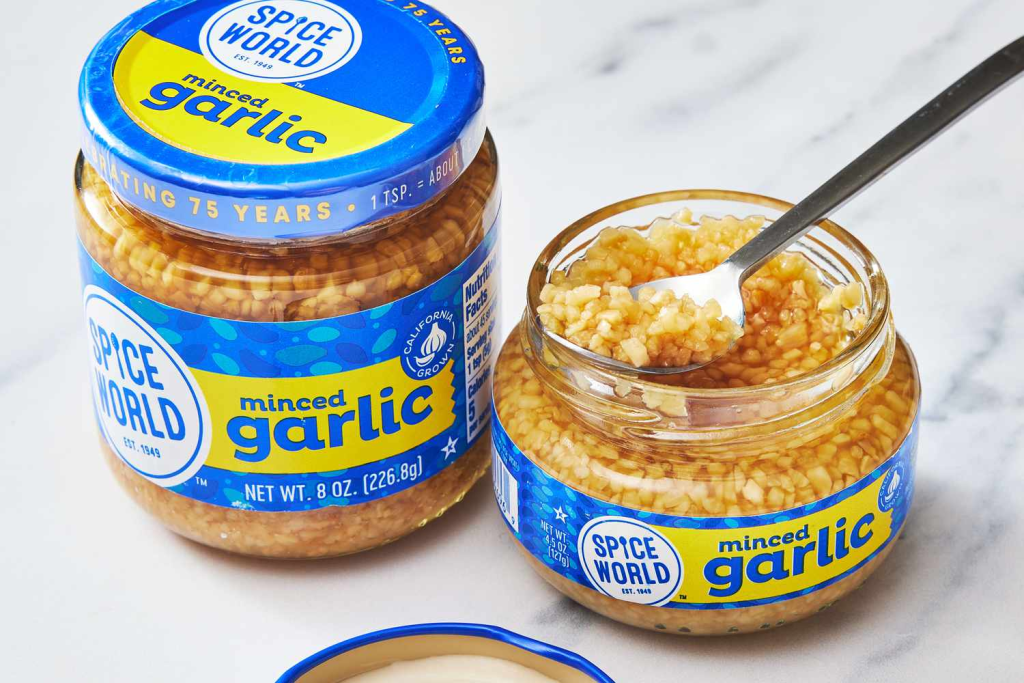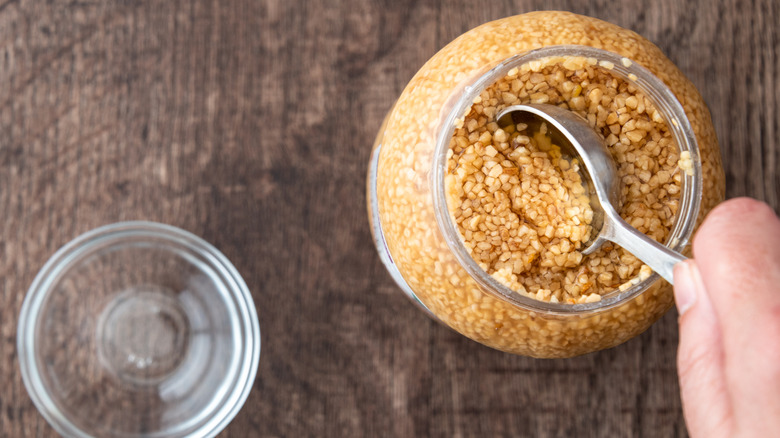Garlic is a powerhouse ingredient that enhances the flavor of countless dishes. Whether you’re making a savory pasta sauce, a fragrant stir-fry, or a rich marinade, garlic adds depth and complexity. But when it comes to choosing between fresh garlic and jarred garlic, home cooks are often divided.
Is fresh garlic really better? Or is jarred garlic a convenient substitute without sacrificing too much flavor? Let’s break it down and settle the debate once and for all.

Fresh Garlic: The Flavorful Choice
Fresh garlic is often the gold standard in cooking. It has a strong, pungent aroma and a taste that ranges from spicy when raw to sweet and mellow when roasted. But beyond flavor, fresh garlic comes with some important benefits and drawbacks.
Pros of Fresh Garlic:
- Intense Flavor: Fresh garlic delivers a bold, complex taste that enhances any dish.
- Nutritional Benefits: It’s packed with allicin, a sulfur compound known for its antioxidant and anti-inflammatory properties.
- No Preservatives: Unlike jarred garlic, fresh garlic is free from additives like citric acid or preservatives that can affect taste.
- Better Texture: Freshly minced garlic blends seamlessly into dishes, providing a more natural consistency.
Video: Fresh Garlic vs Prepared Garlic: Can You Taste the Difference?
Cons of Fresh Garlic:
- Time-Consuming: Peeling and mincing garlic can be tedious, especially if you’re cooking in a hurry.
- Short Shelf Life: Fresh garlic bulbs don’t last forever. They can sprout or dry out if not stored properly.
- Sticky & Smelly Hands: Anyone who’s ever minced fresh garlic knows the smell lingers on your fingers!
While fresh garlic is the preferred choice for chefs and purists, some home cooks find the prep work too much—leading them to opt for the jarred variety.
Jarred Garlic: The Convenient Option

Jarred garlic is pre-minced, packaged in oil or water, and sold in grocery stores for ultimate convenience. For busy cooks, it eliminates the need for peeling and chopping, but is it really a worthy substitute for fresh garlic?
Pros of Jarred Garlic:
- Saves Time: No need to peel, chop, or clean up garlic bits—just scoop and go.
- Longer Shelf Life: A jar of garlic can last months in the fridge, reducing food waste.
- Less Mess: No sticky hands, no lingering garlic smell on your fingers.
Cons of Jarred Garlic:
- Weaker Flavor: Jarred garlic has a milder taste, lacking the sharpness and depth of fresh garlic.
- Preservatives & Additives: Many brands contain citric acid or phosphoric acid to extend shelf life, which can slightly alter the taste.
- Lost Nutrients: The processing of jarred garlic reduces its allicin content, meaning fewer health benefits.
Jarred garlic is great for quick meals and bulk cooking, but it may not pack the same punch as fresh garlic in dishes where flavor is king.
Flavor Showdown: Fresh vs. Jarred Garlic

When it comes to flavor, fresh garlic wins by a mile.
- Fresh garlic is spicy, sharp, and pungent when raw, but transforms into a mellow, sweet, and buttery flavor when cooked.
- Jarred garlic is softer, less intense, and sometimes has a slightly sour aftertaste due to preservatives.
If you’re making a garlic-heavy dish like garlic butter shrimp, garlic bread, or aioli, fresh garlic will make a noticeable difference. But if the garlic is just a background note—like in a stew or soup—jarred garlic can do the trick.
Nutritional Comparison: Which One Is Healthier?
Fresh garlic is often praised for its health benefits, especially its high allicin content. Allicin is the compound responsible for garlic’s strong smell and many of its medicinal properties, including:
- Boosting the immune system
- Lowering blood pressure
- Reducing cholesterol levels
- Acting as an anti-inflammatory
However, allicin degrades over time, which means jarred garlic has significantly less of this powerful compound. Additionally, some jarred garlic brands contain preservatives and stabilizers that may reduce its overall health benefits.
If nutrition is a top priority, fresh garlic is the clear winner.
Best Uses: When to Choose Fresh or Jarred Garlic
Video: Does Fresh Garlic actually taste better than Garlic in a Jar?
The choice between fresh and jarred garlic often depends on what you’re cooking. Here’s when to use each one:
Use Fresh Garlic When:
- Making raw dishes like bruschetta, dressings, or dips where garlic’s intensity matters.
- Cooking garlic-forward dishes like garlic butter steak, roasted garlic, or homemade garlic bread.
- Wanting to maximize nutritional benefits for health-conscious meals.
Use Jarred Garlic When:
- Making quick meals where convenience is key (like weeknight pasta).
- Cooking soups, stews, or slow-cooked dishes, where garlic’s subtlety won’t be as noticeable.
- Preparing bulk recipes that require lots of garlic but don’t need a strong, fresh taste.
What Do Chefs and Nutritionists Say?

Most professional chefs agree that fresh garlic is superior for flavor and aroma. However, they acknowledge that jarred garlic can be useful when time is tight.
Nutritionists also favor fresh garlic for its higher allicin content and lack of preservatives. That said, they also recognize that jarred garlic still provides some health benefits—just at a lower potency.
Ultimately, the choice comes down to personal preference and lifestyle.
Conclusion: Striking a Balance Between Convenience and Flavor
So, is fresh garlic better than jarred garlic? The answer depends on your priorities.
- If you care most about flavor and nutrition, fresh garlic is the way to go.
- If you prioritize convenience and efficiency, jarred garlic can be a lifesaver.
- If you want the best of both worlds, keep both options in your kitchen! Use fresh garlic when it truly makes a difference and jarred garlic for quick and easy meals.
At the end of the day, the best garlic is the one that gets you cooking. Whether fresh or jarred, as long as it makes your food delicious, you’re making the right choice.


